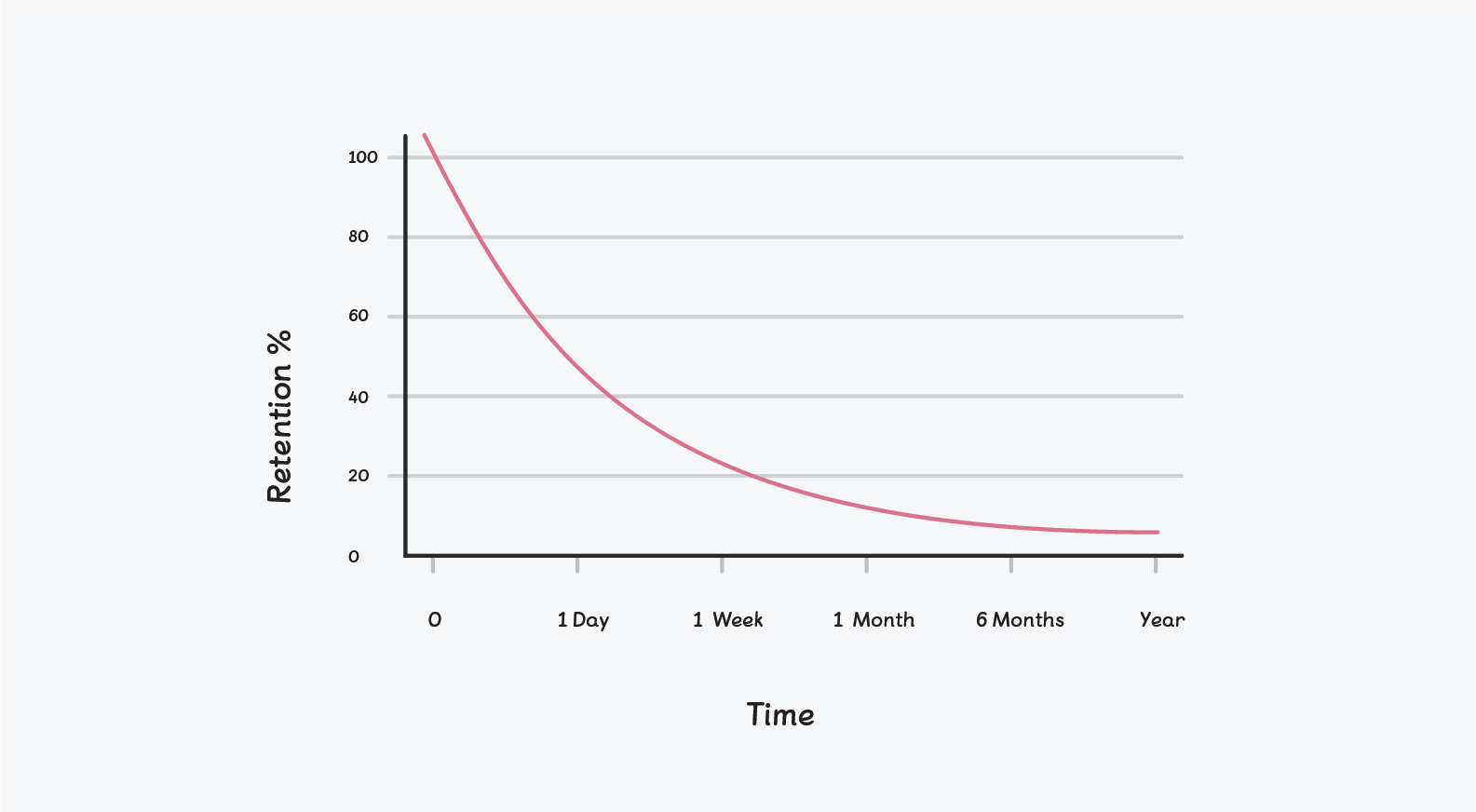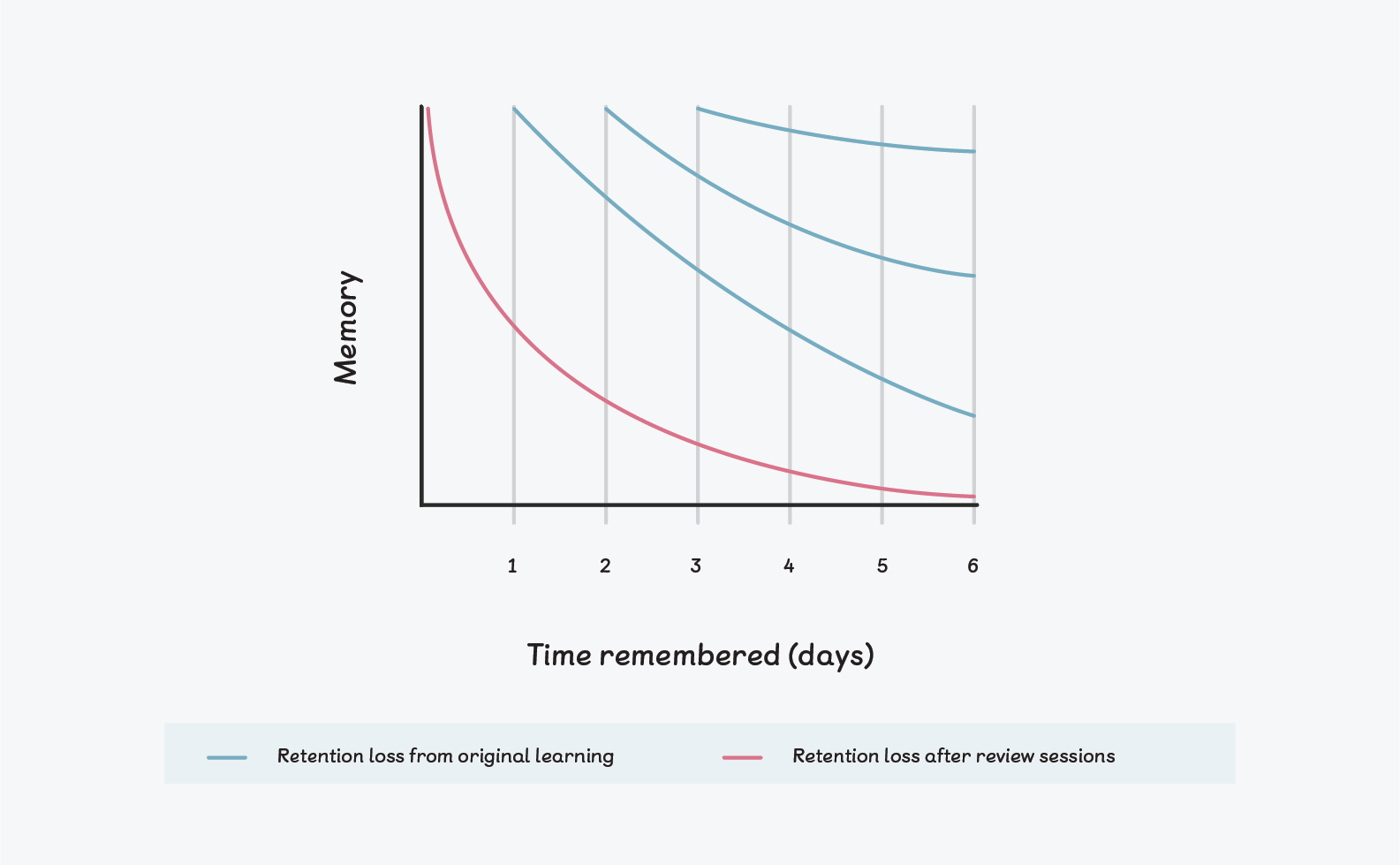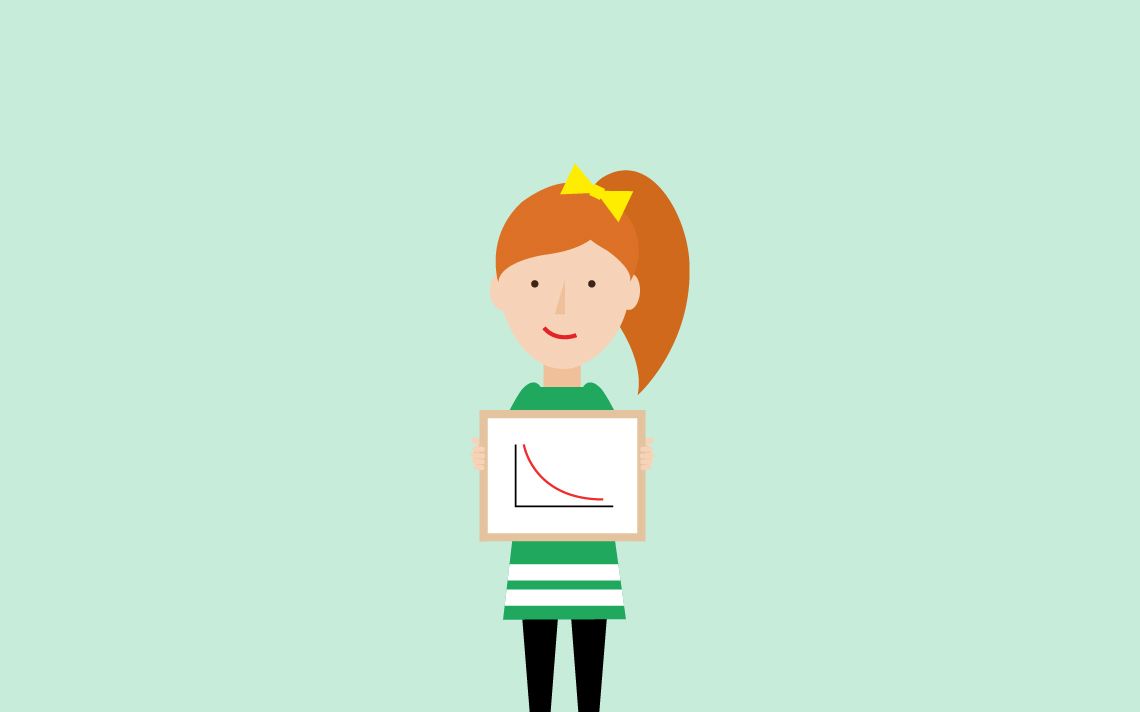The Forgetting Curve: Helping learners retain knowledge
Editor’s Note:
This is an updated version of a blog post originally published on September 25, 2019
Learners can’t become fluent if they keep forgetting what they’ve been taught. Here’s how you can make sure that learners retain knowledge and build fluency.
How many times have you faced a sea of blank faces when you refer to something you know your pupils should be able to do?
Perhaps their previous teacher assures you that they have mastered this skill. Or maybe you’ve taught this concept and know your class has competently carried out the procedure before. Yet, now your learners apparently have no idea what you’re talking about.
So, what do you do when learners forget? And more importantly, how can you help them retain learning and become fluent?
What do we know about how children learn?
Cognitive neuroscience teaches us about the importance of deep and sustained learning by helping children make as many links as possible between new learning and prior learning.
Nearly 100 years ago, Jean Piaget referred to the way learners organise their understanding as schemas. As they encounter new knowledge over time, learners adapt their existing schemas in order to incorporate new understanding (this is why a mastery approach to teaching is so effective).
Taking the time to explore many different aspects of a mathematical concept and applying it to a range of different problems and contexts, helps learners build and strengthen connections in their brain. The greater the number of connections created, the more secure their learning will be.
So, why do learners forget? Understanding the forgetting curve
No matter how deeply you teach a subject, despite all of the opportunities you give learners to build connections, however carefully your lessons are sequenced to provide chances to apply their knowledge in different contexts, children have an amazing ability to fail to recall prior learning right when they need it.
There’s a reason for this. To get to the bottom of it, let’s look at ‘the forgetting curve’, first described by Hermann Ebbinghaus in 1885.

In his work, Ebbinghaus describes a decrease in the brain’s ability to retain memory over time. Within the first few days of learning, you’ll find that memory loss is rapid. After that, the rate of forgetting starts to decrease and become much slower. So the question is: how can we harness this research to help us improve our learners’ ability to remember?
He goes on to describe the concept of over-learning: revisiting topics at regular intervals to secure them in memory. With over-learning, the forgetting curve looks more like this:

When you look at the bigger learning picture, it’s clear that providing learners with regular opportunities to revisit prior learning is a more effective teaching strategy overall.
Boost Your Practice with FREE CPD
Receive a CPD boost every time you refer a school! Both you and the referred school will earn a full day of CPD and 2 free places on our 3-day Essentials of Teaching Maths Mastery course (valued at £1700).
Get started on helping struggling schools reach maths success now!

How can we overcome retention problems?
The good news is, with a mastery approach to teaching, maths lessons focus on exploring and consolidating new learning by giving children opportunities to use their conceptual reasoning skills and apply their knowledge to a range of problems of increasing complexity.
Since the introduction of the 2013 English national curriculum, reasoning and problem solving now have just as much importance as fluency (formerly the main focus for much primary school maths teaching in England).
The less good news? Teachers are expected to fit even more into their daily maths lessons. Many schools have recognised this as a nearly impossible task and an increasing number of schools are choosing to teach separate fluency sessions at a different time to their daily maths lessons.
Call it a maths meeting, maths café, number talk, fact fluency, or arithmetic practice — the name doesn’t matter. What’s important is that learners have regular opportunities to recall prior learning and time to practice their key skills so they remain sharp and so they can retrieve information they’ve learned when needed. Regular practice sessions to recall prior knowledge and put it into action helps disrupt the forgetting curve.
Daniel Willingham describes memory as the residue of thought. Children remember what they think about, so we need to make sure our learners are thinking about maths while they’re practising.
Forgetting is a natural part of learning. By connecting new and prior learning and building fluency into your teaching practice, you can help your learners to retain knowledge and master new skills.
References
McCourt, M. (2019). Teaching for mastery. Suffolk, United Kingdom: John Catt Educational Ltd.
Willingham, D. (2009). Why don’t students like school? San Francisco, CA: Jossey-Bass.
